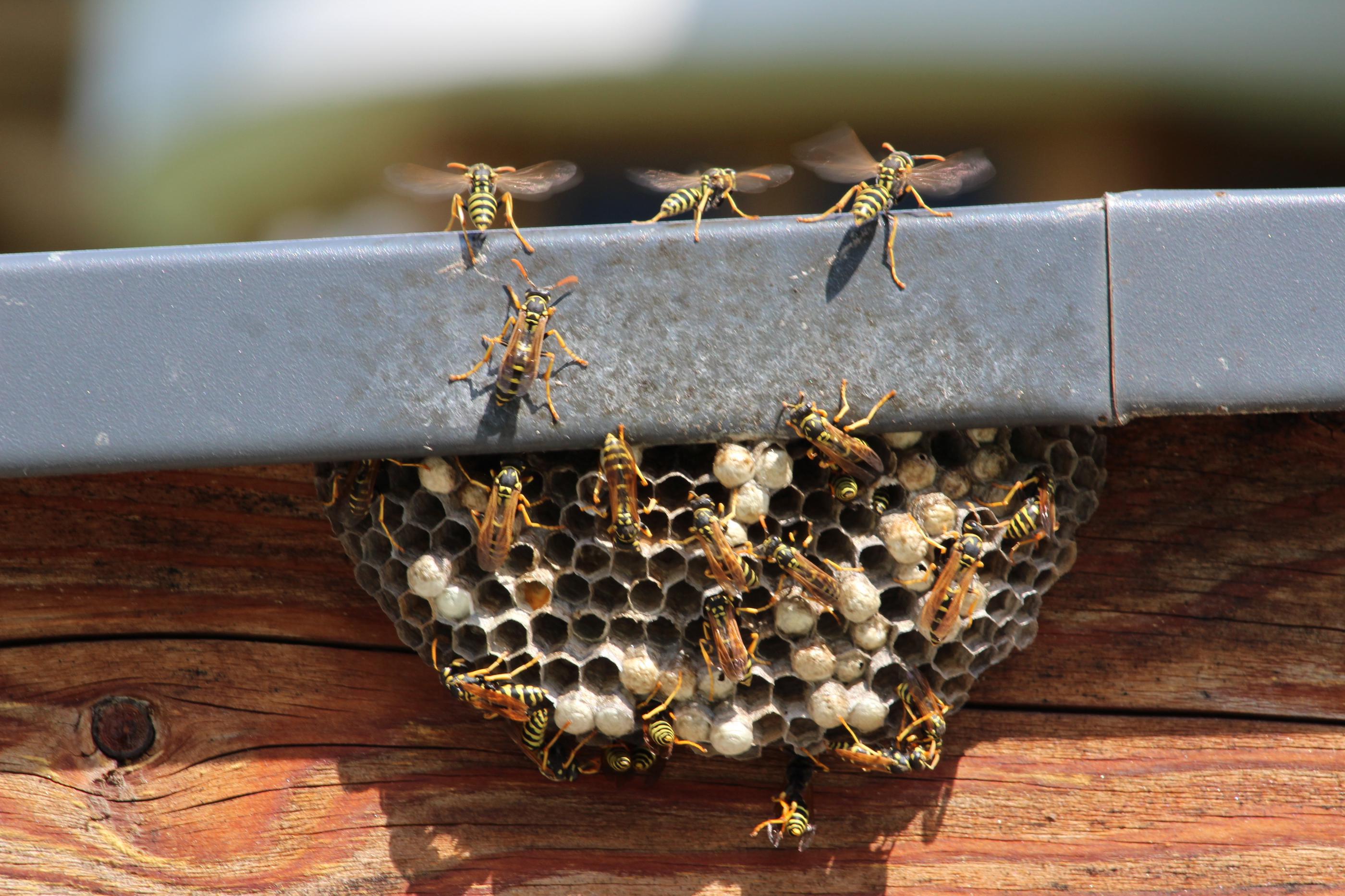From Pollinator to Predator – The Differences Between Bees, Wasps, and Hornets
Posted by Mosquito Squad
March 13, 2024

When flowers bloom, many buzzing insects come to visit. Some of the most distinct insects are bees, wasps, and hornets because of their recognizable yellow and black coloring and their notorious sting. These bugs all seem similar; however, their behaviors vary.
Get to know the characteristics of these pollinators and how to tell them apart. Knowing the differences between bees, wasps, and hornets is necessary to better understand which insects may be aggressive and require caution.
Bee, Wasp, and Hornet Identification
While all three insects share certain physical features, they also have notable differences. Get to know what makes each of these insects unique.
Bee Identification
What does a bee look like?
While there are over 20,000 species of bees and the appearance of each will vary slightly, bees are typically shorter and wider than wasps and hornets, with a fuzzy appearance and thin black and yellow stripes. Common bees in North America include honey bees, which have elongated bodies; bumble bees, which are fuzzier and wider than other types of bees; and carpenter bees, which have round, stout bodies like bumble bees but also have hairless and smooth abdomens.
Bee-havior
Most bees are social insects, living in colonies organized around a queen bee. Bees are primarily herbivores that feed on nectar and pollen. This makes them excellent pollinators and beneficial to the plants and trees in your yard. Using the nectar and pollen they collect; bees construct elaborate wax hives filled with honey to provide food for winter months when there are fewer flowers to feed on. They typically construct their nests in cavities, such as underneath a tree branch, in an abandoned tree trunk, or in the corner of a roof where they are protected.
When it comes to aggression and the likelihood of being stung, bees are generally calm unless provoked and will typically only sting in self-defense. Their stings are barbed, meaning the stinger remains embedded in the victim's skin, often resulting in the bee's death.
If you have old and dying trees with open cavities in your yard, they can make the perfect home for bees and other stinging pests, like social wasps. A professional tree-removal service from our friends at your local Monster Tree Service can help you make your yard less inviting to stinging, nest-building insects.
Wasp Identification
What does a wasp look like?
Wasps have slender bodies compared to bees. They also have less body hair and are often brightly colored with distinct black and yellow patterns, or even white or red coloring in some cases. They do not always have perfect stripes like bees and sometimes have more intricate patterns with dots or points. Wasps typically have a narrow waist, known as a petiole, separating their head from their abdomen.
Wasp behavior
Unlike bees, which feed exclusively on pollen and nectar, most wasps are omnivores and feed on other insects in addition to plant nectar.
While some species of wasps are solitary hunters, others, such as hornets and yellow jackets, are social and form large colonies. Solitary wasp females build their nests independently and live in small cavities below and above ground. Solitary wasps are typically harmless and are more interested in hunting other insects than stinging people. On the other hand, social wasps live in large colonies with one queen, like bees. Social wasps tend to be more aggressive than solitary wasps because they have large colonies to defend and are typically more territorial. Wasps may sting repeatedly when threatened because, unlike bees, they have smooth stingers with few barbs, allowing them to sting multiple times.
Hornet Identification
What does a hornet look like?
Hornets are larger and bulkier than other wasp species. Hornets have distinct yellow or white and black markings. Hornets typically have more black coloring on their bodies than other wasps. They also have a wider head than other wasps, allowing them to have a powerful bite that makes them strong predators and easily able to dismember other insects.
Hornet behavior
Hornets are a social species of wasp. Like most wasps, hornets are omnivores and feed on plants and other insects They form large colonies that can contain hundreds or even thousands of individuals. They’re known for their aggressive defense of their nests and possess strong venom capable of incapacitating prey and deterring predators. While hornets are territorial and have a powerful sting, they are not aggressive for the sake of being aggressive. If you leave them alone and do not disturb their colony, they typically won’t sting you.
Bees Vs. Wasps – What’s the Difference?
The main differences between bees and wasps are their diet and aggression levels. Bees are primarily herbivores and feed on nectar and pollen to produce honey. Wasps are omnivores and prey on other insects and scavenge for various foods, including meat and fruits. While some wasp species live in social colonies like bees, others are solitary nest builders. Wasps are also typically more aggressive than bees and can deliver multiple stings with their smooth stinger. Bees tend to be more docile but will sting (just once each) when threatened.
What Is the Difference Between a Wasp and a Hornet?
Hornets are generally larger and more robust than other species of wasps. Additionally, hornets have thicker bodies and distinct markings, often featuring more extensive black and yellow stripes. In contrast, other wasp markings often don’t resemble perfect stripes and are a bit more intricate. Hornets can exhibit heightened aggression when defending their nests. Their stings are also typically more potent due to the larger size of their venom glands than other wasps.
The Benefits of Wasps, Hornets and Bees
As pollinators, bees, wasps, and hornets are all beneficial to their ecosystems. These insects feed on nectar from flowers and collect pollen on their bodies. While moving from plant to plant, they pollinate different flowering plants. The fuzzy hairs on most bees make them great pollinators as they easily trap and distribute pollen from their bodies. Wasps are often considered accidental pollinators as they don’t have large amounts of fuzz to capture pollen like bees but are still able to transfer some amount of pollen while traveling between plants.
All three insects serve as food sources for birds, other insects, and insect-eating animals. Solitary wasps that live underground help aerate the soil and support nutrient distribution underground. Wasps and hornets also help to manage insect populations by feeding on larvae and insects including aphids, caterpillars, and more.
However, these winning qualities can often be paired with aggressive or even property-destructing behavior, especially from territorial wasps and hornets. So, it’s understandable that most homeowners do not want these insects to be too close to their homes!
Related Blog: How to Promote Pollinators While Keeping Mosquitoes at Bay
Protect Yourself Against Aggressive Stinging Pests
While these stinging insects have many benefits and are typically non-aggressive unless disturbed or protecting a colony, if a large population is in your yard, they may become territorial and aggressive toward you and your loved ones. That’s why Mosquito Squad offers wasp, hornet, and yellow jacket control services to protect against venomous and potentially aggressive stinging pests. Our pest professionals will safely remove wasp, hornet, and yellow jacket nests and help deter future colonies from forming in your yard.
To learn more, contact the Squad today at (877) 332-2239 or request a quote online.
